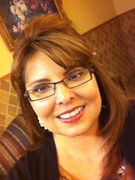Who Suffers From Venous Disease?
Rajagopalan Ravi, MD, FACS
Vascular Surgeon
Medical Director, Vein Center
Arizona Heart Institute and Arizona Heart Hospital
Venous disease can affect anyone, but some people are more susceptible to certain types of venous disease. For example, women are three times more likely than men to have spider or varicose veins. Varicose veins also have a tendency to run in families. Other risk factors for varicose veins include age, obesity, pregnancy (pregnant women are more likely to develop spider and/or varicose veins) and extreme height. People with jobs that require them to stand for long periods often develop varicose veins, as well.
Thrombophlebitis is more likely to occur in people who have had surgery, a baby or a long-standing illness requiring bed rest and inactivity.
Symptoms
Vein problems are often hereditary and may reoccur periodically. So it is important not to neglect the early signs of varicose veins, ulcer formation or even troublesome spider veins. Neglect and lack of treatment can lead to long-term disability. In the case of varicose veins, the symptoms depend on the size and type of varicose veins in the legs. A feeling of heaviness in the legs is a common early symptom. Other symptoms include a feeling of fatigue in the leg muscles, aching in the legs, ankle swelling at the end of the day, skin discoloration, tenderness and soreness along the veins and night time leg cramps.
With venous stasis disease, symptoms occur primarily in the lower leg and can include swelling, tenderness, skin discoloration, dry, scaly, itchy skin, skin ulcers and pain when standing that is relieved with elevation.
Thrombophlebitis symptoms vary according to the site and length of the affected vein. Patients may experience swelling, pain, fever, redness and warm skin. Severe obstruction of the vein may cause the skin in the affected area to look blue, and pulling the toes toward the knees may cause calf pain.
Improving Vein Disease
If you already have some form of vein disease in your legs, there are steps you can take to improve your condition. Some of these tips can also be used for the prevention of spider veins, varicose veins and other vein disorders.
1. Stay active.
Regular exercise helps to improve circulation. If you already have venous disease, consult your physician prior to beginning an exercise program. When lying in bed or traveling for prolonged periods, move your feet up and down and rotate your ankles, making foot circles. This helps the calf muscles to pump blood in the direction of the heart, resulting in less pooling. Being active and eating a low-fat balanced diet will also help to control weight and reduce circulation problems, including vein disease.
•Avoid standing or sitting in one position for a long period of time – this makes blood pool in the legs.
•Do not sit with your legs crossed.
•Rise up on your toes several times an hour – this flexes the calf muscles and helps push the blood toward the heart.
•Shift weight from one foot to the other while standing.
•Elevate your legs several times a day for 10 to 15 minutes. At work, set aside rest periods for leg elevation. It is best to raise the legs higher than the level of the heart. If possible, try lying on the floor with your legs on a chair or against the wall.
2. Avoid injury to the legs & feet.
•If you become injured, treat it correctly. Cover any wound with a plain, sterile gauze pad. Do not apply any ointments.
•Report all injuries to your doctor.
3. Inspect your legs & feet every day.
•Check for redness, dry skin, blisters and/or cracks and calluses, which may allow bacteria to grow and infection to form. You may develop breaks in your skin that you cannot feel. Use a mirror to check the soles of your feet.
•See your doctor about any foot problems.
4. Keep legs & feet clean, soft & dry.
•Wash daily with mild soap and lukewarm water. Dry thoroughly with a soft towel, especially between the toes.
•Apply lanolin, a similar mild cream or a skin lotion that does not contain alcohol to prevent dry, cracked skin.
•Dust your feet with powder to control perspiration.
•Wear clean, absorbent socks or stockings, preferably cotton or wool. Change your socks every day.
5. Choose appropriate clothing.
•Wear support stockings at all times when you are awake. You may remove them before you go to sleep.
•Do not wear girdles, garters or socks that have tight elastic bands, or other tight clothing that restricts your circulation.
•Buy shoes at midday when your feet are slightly swollen (they will have swollen too much by evening). Shop for shoes at stores that employ experienced salespeople; you’ll get a better fit.
6. Do not smoke.
•Tobacco smoking narrows the blood vessels, further restricting blood supply to the skin.
For more information about the treatment and prevention of venous disease, please contact Arizona Heart Institute Vein Center at 602-707-3511.
To find out more about varicose veins or to contact this or another physician at the Arizona Heart Institute visit http://www.azheart.com/ or call (602)266-2200.

